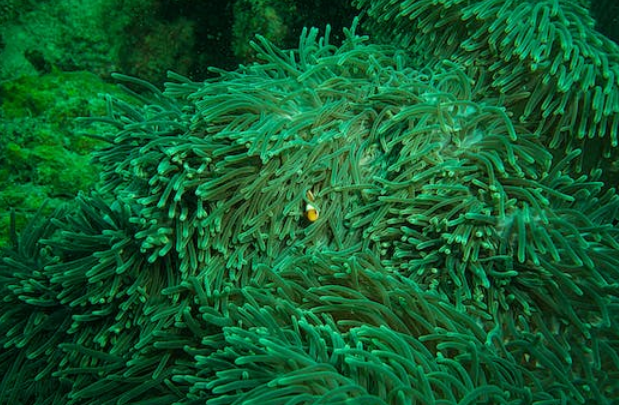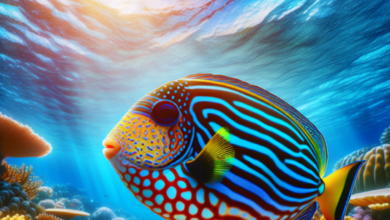Introduction
If you’re an aquarist looking to add a vibrant and captivating fish to your saltwater tank, look no further than the beautiful Tang fish. With their eye-catching colors and unique personalities, Tangs have become a favorite choice among fish enthusiasts. In this comprehensive guide, we will explore the fascinating world of Saltwater Tang Fish, providing you with all the information you need to successfully care for these amazing creatures. From their diverse species to appropriate tank setups, feeding habits, and potential challenges, we’ve got you covered. So, let’s dive in!
1. Understanding Tang Fish
1.1 What are Tang Fish?
Tang fish, also known as Surgeonfish, belong to the Acanthuridae family. They are a type of marine fish found in tropical and subtropical waters around the world. Tangs are easily recognizable by their bright colors, sharp spines on their tails, and a protruding scalpel-like blade near their tails, used for defense.
1.2 Different Species of Tang Fish
Tang fish encompass a wide array of species, each with its unique characteristics and colors. Some popular species include the Powder Blue Tang, Yellow Tang, Naso Tang, and Achilles Tang. Each species brings its own charm and beauty to your saltwater tank.
2. Setting up the Perfect Tang Fish Tank
2.1 Tank Size and Environment
When it comes to Tang fish, providing a spacious environment is crucial. These active swimmers require ample space to thrive. A tank size of at least 100 gallons is recommended, with larger tanks being ideal for accommodating multiple Tangs.
2.2 Tank Decor and Substrate
Creating a natural and stimulating environment is essential for Tang fish. Incorporate live rocks and corals, which mimic their natural habitat and provide hiding places. Tangs also appreciate open swimming areas, so ensure there is enough space for them to explore. Use fine sand as the substrate, as this resembles their natural foraging environment.
2.3 Water Parameters and Filtration
Maintaining stable water conditions is vital for the health of your Tang fish. Aim for a temperature between 75 and 82 degrees Fahrenheit, pH levels between 8.1 and 8.4, and a salinity level of 1.023-1.025. High-quality filtration systems, protein skimmers, and regular water changes are necessary to keep the water pristine and free from harmful substances.
3. Feeding and Nutrition
3.1 Herbivorous Diet
Tang fish are primarily herbivores, feeding on algae and marine vegetation. To ensure a well-balanced diet, include a variety of foods such as dried seaweed, spirulina flakes, and quality pellet foods specifically formulated for herbivorous fish. Supplement their diet with occasional live or frozen brine shrimp, mysis shrimp, or other small meaty foods.
3.2 Feeding Frequency and Quantity
Feed your Tang fish small portions multiple times a day, replicating their natural grazing behavior. Overfeeding can lead to health issues, so it’s important to monitor their food intake. Remove any uneaten food to maintain water quality and prevent the accumulation of waste.
4. Tang Fish Behavior and Compatibility
4.1 Active Swimmers and Territory
Tang fish are highly active swimmers, constantly exploring their surroundings. They require ample swimming space and are known to establish territories within the tank. Providing suitable hiding spots and ensuring enough distance between individuals will help minimize aggressive behavior.
4.2 Compatibility with Other Fish
While Tangs can be territorial, they can coexist with other peaceful fish species. However, avoid keeping multiple Tangs of the same species in a smaller tank, as this can lead to aggressive behavior. Research the temperament and compatibility of different fish species before introducing them to your Tang fish tank.
5. Common Challenges and Health Concerns
5.1 Ich and Other Diseases
One common challenge with Tang fish is their susceptibility to diseases like Ich, a parasitic condition that causes white spots on their bodies. Quarantining new Tangs before introducing them to the main tank and maintaining optimal water conditions can help prevent such diseases. Regular observation and prompt treatment are crucial in ensuring the health of your Tang fish.
5.2 Nutritional Deficiencies
Inadequate nutrition can lead to various health issues in Tang fish, including deteriorating coloration and weakened immune systems. Providing a balanced diet with the necessary nutrients is essential for their overall well-being. Consult with a knowledgeable aquarist or veterinarian to ensure your Tangs receive the appropriate nutrition.
Conclusion
Saltwater Tang fish bring a burst of color and vibrancy to any saltwater tank. By understanding their unique characteristics, creating an appropriate tank setup, and providing a balanced diet, you can create a thriving environment for these beautiful creatures. Remember to consider their behavior and compatibility with other fish to ensure a harmonious tank community. With proper care and attention, your Tang fish will become the centerpiece of your aquatic masterpiece.
FAQ
1. Q: How long do Tang fish typically live?
– A: Tang fish can live anywhere from 8 to 20 years, depending on the species and the care provided.
2. Q: Can Tang fish be kept in a reef tank?
– A: Yes, many Tang species are reef-safe. However, some may nip at corals, so it’s important to research the specific species before adding them to a reef tank.
3. Q: Can Tang fish be kept in a smaller tank?
– A: It is not recommended to keep Tang fish in smaller tanks, as they require ample space to swim and establish territories.
4. Q: Are Tang fish difficult to care for?
– A: Tang fish require a bit more care compared to some other marine fish species. However, with proper research, a suitable tank setup, and a balanced diet, they can thrive in a well-maintained aquarium.
5. Q: Can Tang fish be kept with aggressive fish species?
– A: Tang fish are generally peaceful and can coexist with other non-aggressive fish species. However, it’s important to research the compatibility of specific fish before introducing them to the tank.




